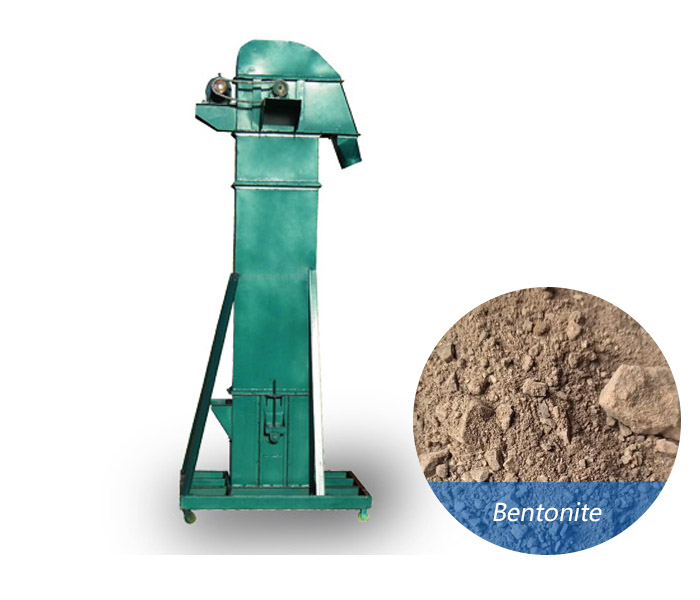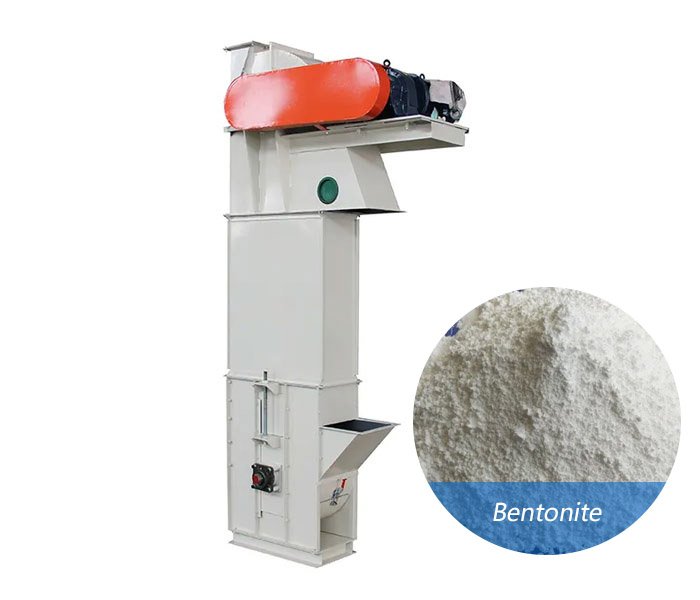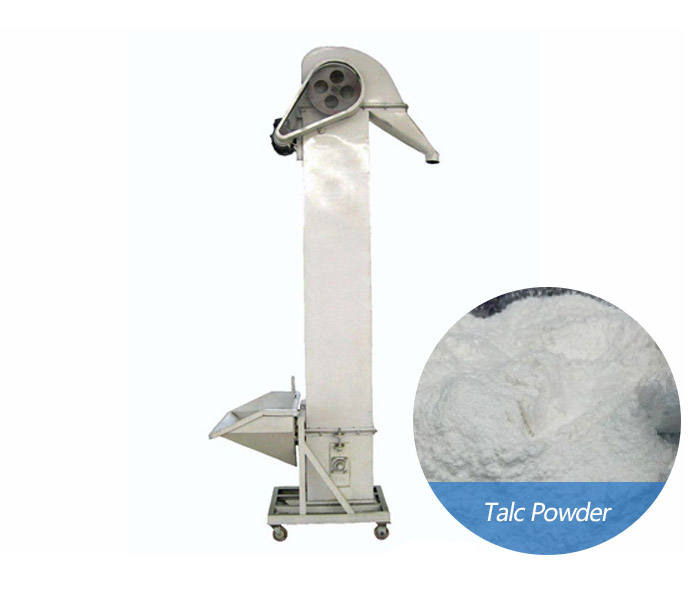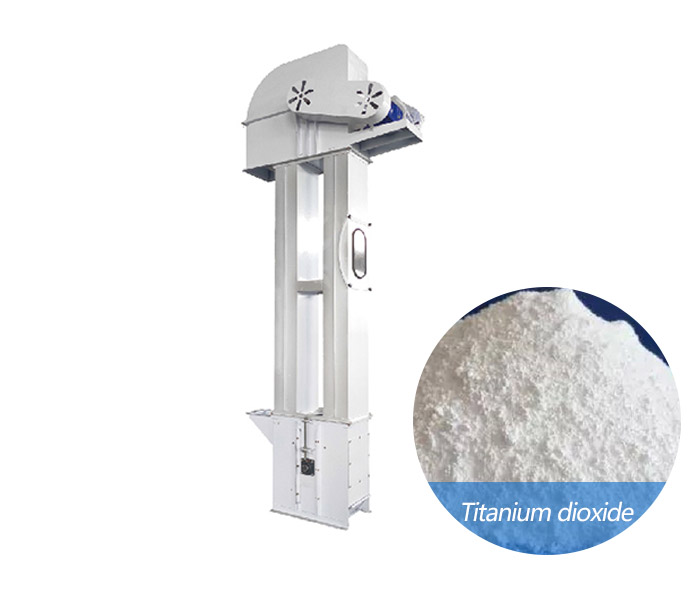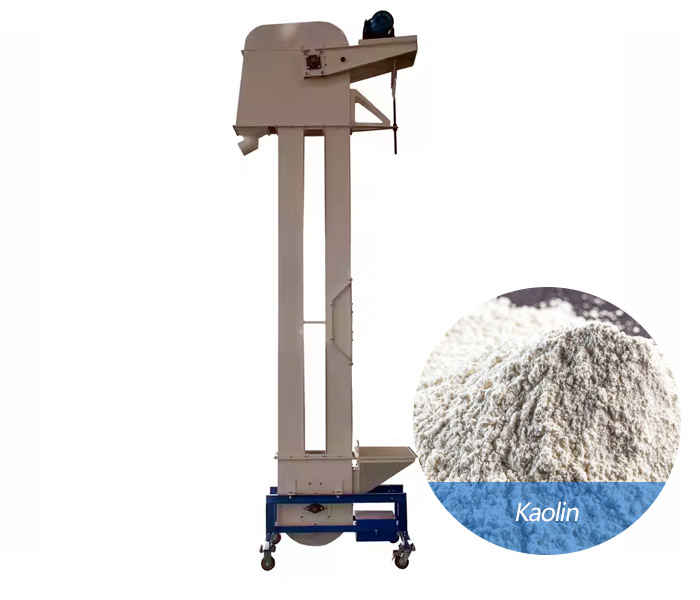
Kaolin conveying bucket elevator
Designed for vertical transportation of kaolin and other bulk materials.
| Lifting height | 10-50 meters, customized according to specific needs. |
| Conveying capacity | 10-200 tons/hour |
| Hopper capacity | 0.5-5 liters |
| Motor power | 3-30 kW (adjusted according to height and conveying capacity) |
| Belt/chain speed | 0.5-2 meters/second |
What is Kaolin conveying bucket elevator?
Kaolin conveying bucket elevator is a kind of equipment specially used for vertical conveying of kaolin. It lifts kaolin from low to high through a series of hoppers fixed on belts or chains. This equipment is widely used in industries that require large-scale, continuous and efficient conveying of kaolin.
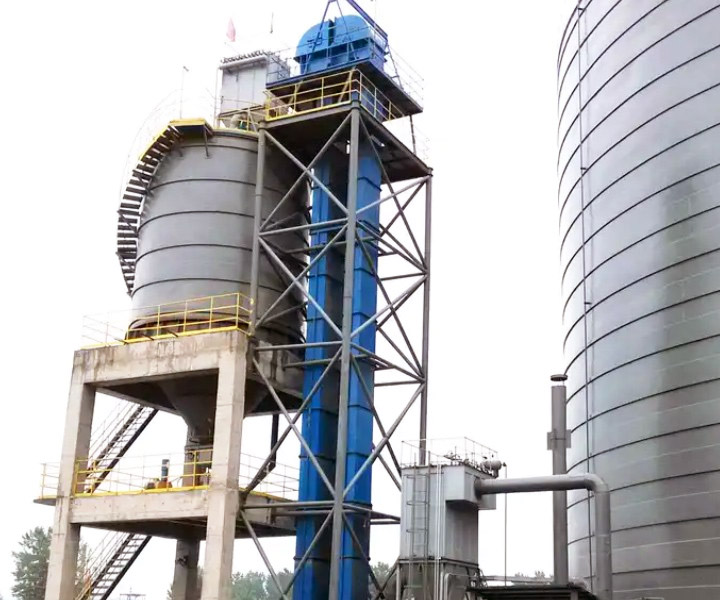
What industries can Kaolin conveying bucket elevator be used for?
Ceramic industry: Kaolin is an important raw material for ceramic production and is used to make porcelain, tiles, etc.
Papermaking industry: Kaolin is used as filler and coating to improve the gloss and printing performance of paper.
Coating industry: Kaolin is used to produce coatings to improve their hiding power and leveling.
Rubber industry: Kaolin is used as filler to enhance the mechanical properties of rubber products.
Chemical industry: Kaolin is used to produce various chemical products such as catalysts, adsorbents, etc.

What are the advantages of Kaolin conveying bucket elevator?
Efficient conveying: It can convey kaolin vertically continuously and efficiently.
Compact structure: It occupies a small area and is suitable for places with limited space.
Stable operation: high-quality materials and precision manufacturing ensure stable and reliable operation of the equipment.
Convenient maintenance: reasonable design, easy maintenance and repair.
Environmental protection and energy saving: good sealing, reduced dust pollution, energy saving and environmental protection.
How does the Kaolin conveying bucket elevator work?
The Kaolin conveying bucket elevator drives the belt or chain through a motor to drive the hopper fixed on it. The hopper is loaded with kaolin at the bottom, and as the belt or chain is lifted, the kaolin is transported to the top and then discharged through the discharge port. The whole process is carried out continuously to achieve vertical transportation of kaolin.
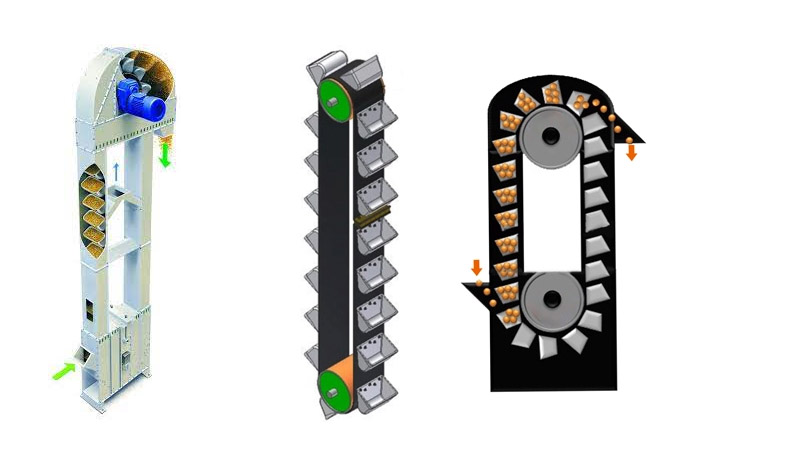
Kaolin conveying bucket elevator model parameters
| Model | Max feed size(mm) | Capacity(T/H) | Lifting speed(m/s) | Belt width(mm) | Lifting height(m) |
| TD160 | 25 | 5.4-16 | 1.4 | 200 | <40 |
| TD250 | 35 | 12-35 | 1.6 | 300 | |
| TD315 | 45 | 17-40 | 1.6 | 400 | |
| TD400 | 55 | 24-66 | 1.8 | 500 | |
| TD500 | 60 | 38-92 | 1.8 | 600 | |
| TD600 | 70 | 85-142 | 2 | 700 |
What are the structural components of Kaolin conveying bucket elevator?
Driving device: including motor, reducer, drive wheel, etc., to provide power.
Hopper: fixed on the belt or chain, used to load kaolin.
Belt/chain: connect the hopper to transmit power.
Shell: closed structure to prevent dust from spilling.
Discharging device: located at the top, used to unload kaolin.
Tensioning device: adjust the tightness of the belt or chain to ensure normal operation.
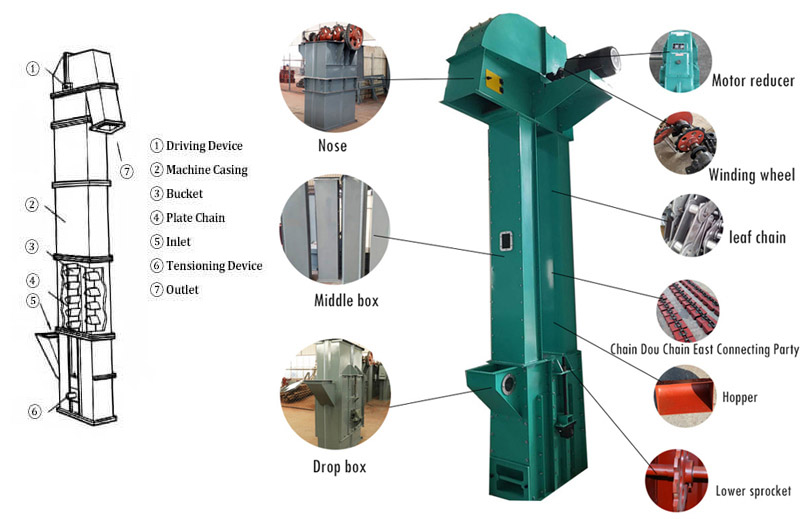
Kaolin conveying bucket elevator case
| Application scenarios | Lift Height | Capacity | Key configuration |
| Vertical transportation of dry kaolin powder from grinding mill to silo storage in a ceramics manufacturing facility. | 15 meters (from ground floor to silo top) | 25 tons/hour (continuous operation, 24/7 production). | Dust-proof design (enclosed barrel and sealed housing); stainless steel barrel (corrosion-resistant, suitable for fine powders); variable speed drive (adjustable feed rate). |
| Elevating wet kaolin slurry (20-30% moisture) from washing tanks to filter presses for dewatering. | 8 meters (short but steep incline). | 15 tons/hour (intermittent operation, batch processing). | Heavy-duty bucket (reinforced polyethylene for wet materials); corrosion-resistant chain (316 stainless steel); drip pan and drainage system (to prevent slurry leaks). |
| Loading bulk kaolin from warehouse to shipping containers at a mineral export terminal. | 22 meters (to reach top of container stacks) | 50+ tons/hour (high-speed operation for quick loading). | deep bucket (optimized for bulk density); explosion-proof motor (safety in dusty environments); automated start/stop (synced with conveyor system). |
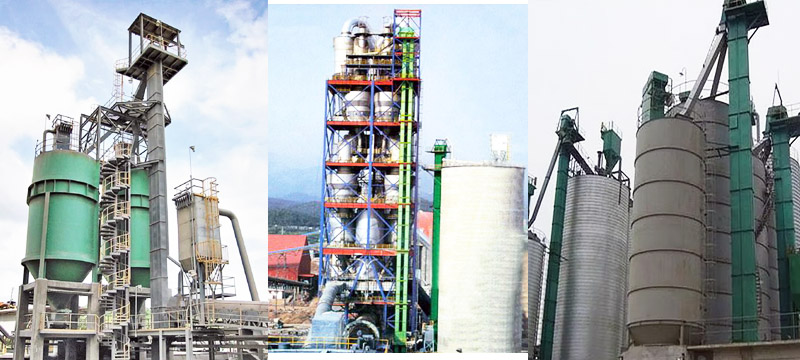
A ceramic factory: The use of Kaolin conveying bucket elevator has achieved efficient transportation of kaolin and improved production efficiency.
A paper mill: Through this equipment, the continuous supply of kaolin is ensured and the quality of paper is improved.
A paint factory: After using this equipment, dust pollution in the production process is reduced and the working environment is improved.
How to choose Kaolin conveying bucket elevator?
Analysis of kaolin characteristics (determining foundation design)
| Kaolin type | Key characteristics | Requirements for elevator |
| Dry powder kaolin | Fineness 200-1250 mesh, easy to raise dust | Fully sealed structure + anti-static hopper |
| Wet kaolin | Water content 15-30%, easy to stick into blocks | Large inclination design + self-cleaning hopper |
| Calcined kaolin | Temperature 80-120℃, abrasive | High temperature resistant chain + wear-resistant ceramic lining |
| Granular kaolin | Particle size 1-5mm, good fluidity | Shallow hopper design + high-speed operation (≤3m/s) |
Expert advice: wet materials need to be tested for adhesion, and polyethylene (PE) or stainless steel perforated hoppers are preferred.
Lifting height and layout (determines power configuration)
Low height (<10 meters): optional belt bucket elevator (low cost, simple maintenance)
Medium height (10-30 meters): chain bucket elevator (TH/NE type, strong stability)
Ultra-high (>30 meters): multi-stage lifting system + anti-sway guide device
Lifting volume requirements (matching model specifications)
| Capacity requirements | Recommended models | Bucket volume | Applicable scenarios |
| <10 t/h | D160 type | 1.1L/bucket | Laboratory/small batch production |
| 10-50 t/h | TH315 type | 6.3L/bucket | Mainstream choice for ceramic raw material factories |
| >50 t/h | NE150 type | 20L/bucket | Large-scale mining/port loading and unloading |
Note: The actual production capacity needs to take into account the filling factor (0.7-0.8 for dry powder and only 0.4-0.6 for wet material).
Hopper material and structure (key durability factor)
| Material | Advantages | Applicable kaolin type |
| 304 stainless steel | Corrosion resistant, easy to clean | Wet/corrosive kaolin |
| Polypropylene (PP) | Anti-adhesion, economical | Sticky wet material |
| Wear-resistant steel | Impact-resistant, long life | Calcined/granulated kaolin |
| Ceramic lining | Super wear-resistant, anti-static | High-purity fine powder |
